Do YouTube and TikTok Shorten Attention Span?
Discover how social media can affect kids' focus and concentration
APR 13, 2023
Do YouTube and TikTok Shorten Attention Span?
Discover how social media can affect kids' focus and concentration
We’ve all been there—watching a YouTube video and staring at the countdown on the right corner. 5…4…3…2…1…SKIP ADS! We can’t click that little button fast enough to skip the ad.
Roughly 94% of pre-roll ads on YouTube are skipped shortly after the first five seconds.
—Thread Group [1]
When Tiktok ads appear between user videos, we are eager for them to finish so we can scroll past.
We now fast forward through commercials while watching TV. And streaming services with commercials? To avoid them, we’ll pay extra.
But how have these tech features impacted kids? How has the increase in screen time affected a child’s ability to focus?
Since the COVID-19 pandemic, schools have relied heavily on computers to accommodate distance learning. Kids are spending more time than ever on screens while in school. When we combine the average time spent on devices outside of school, for teens, the total surpasses 10 hours per day, and as much as 14 hours. [10]
We’ll dive deeper and learn about the effects of social media on our attention span and how it’s making society less patient and more demanding.
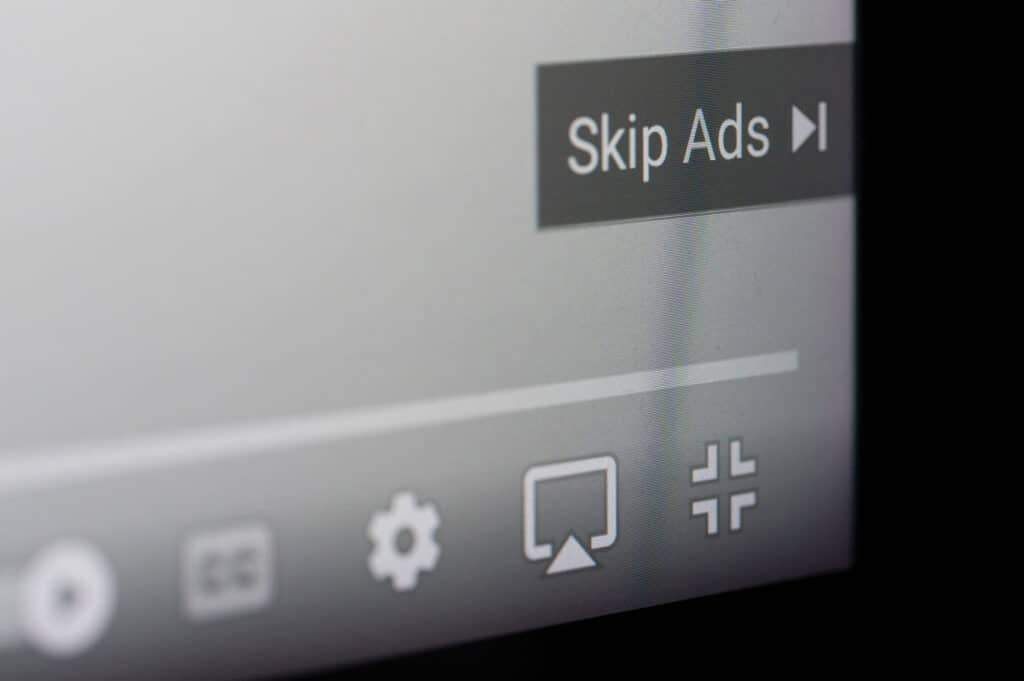
Does Social Media Shorten Attention Span?
An attention span is the amount of time a person can concentrate mentally on a particular activity. Since social media platforms entered our world about 20 years ago, the average attention span has dropped by 1/3 from 12 seconds to 8 seconds. [1]
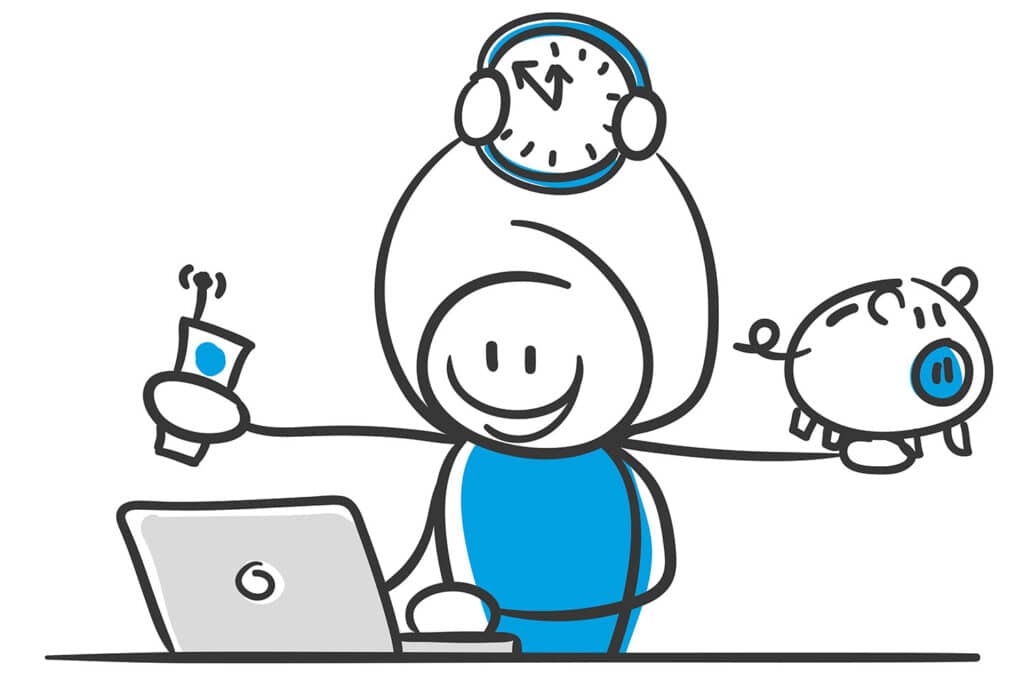
Media multitasking
Think about the last time you worked at a computer. Were you also on your phone, listening to music, checking texts, viewing social media, checking the clock, viewing the weather, and trying to work . . . simultaneously?
This is a common occurrence in our daily lives and it has a name: media multitasking.
Media multitasking has been associated with ADHD, mind-wandering, and impulsivity. [3] Heavy media multitasking also correlates with difficulties falling asleep and achieving less sleep overall.
A study of 12-16-year-olds found that heavy media multitaskers did worse on standardized tests, were less efficient learners, and struggled with growth mindset. [3]
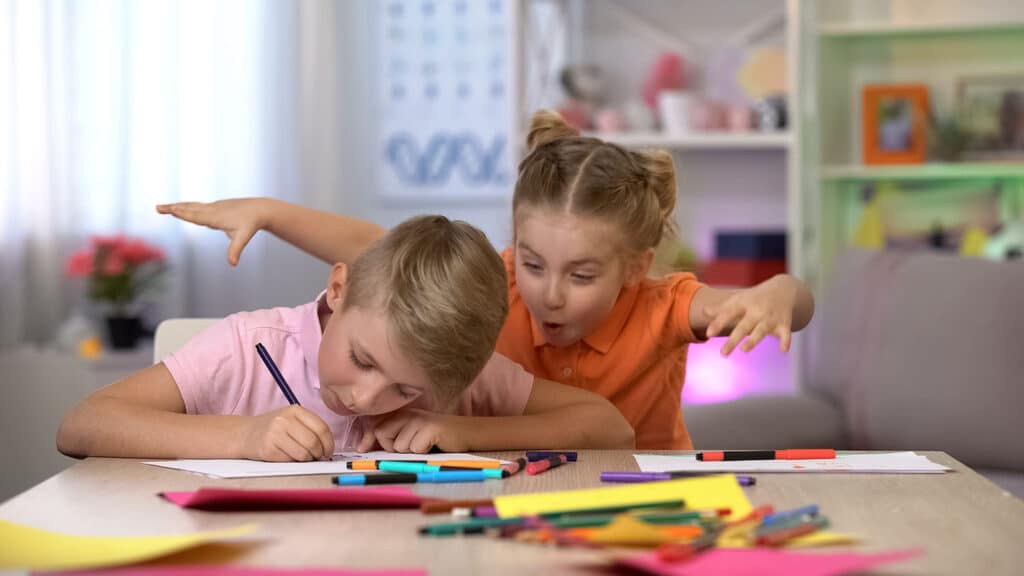
Media Constantly Evolves to Keep Our Attention
Businesses today have to consider consumer attention span and make modifications to grab and hold our attention. Here are some examples of these adjustments:
Commercials and ads
30-second commercials used to be the norm. Today, 15 seconds is the most common length of a commercial. [2]
Songs
Pop songs averaged 3:30 in length in 2020, becoming shorter by 20 seconds compared to 5 years prior. [2]
Click-bait articles
Online, we are enticed by flashy distractions. You may be on a news site, and in the lineup you’ll find article titles and photos that promise juicy details, but fail to deliver when you click and read.
Often, the title or image has nothing to do with the article whatsoever. Either way, we find ourselves off-task and delivered-up to advertisers by social media.
Shorter Videos
Short-form video platforms such as TikTok, and Instagram Reels have grown in popularity. The maximum video length for a video created through the TikTok app is 60 seconds, and videos created off the app and then uploaded can be no more than three minutes long. [11]
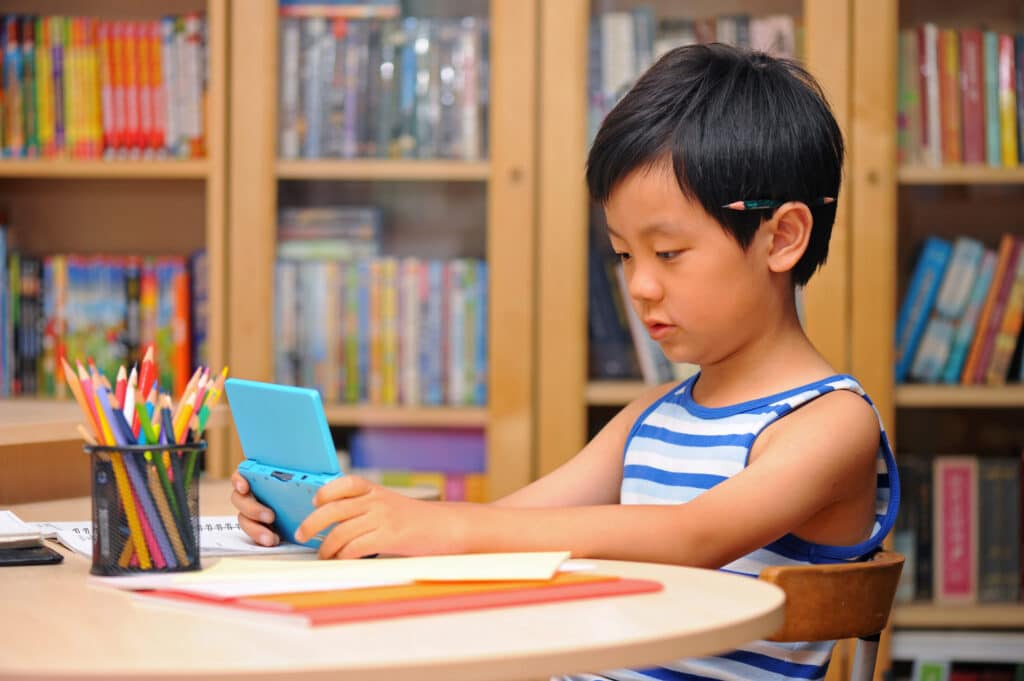
Shorter Content, Shorter Attentiveness
While shorter commercials and songs may not seem like a big deal, short videos are actually shown to decrease collective attention span and impact memory. [1]
In other words, these increasingly shortened pieces of content have weakened children’s ability to sustain focus.
Continuous stimulation
Our society has gotten used to YouTube’s autoplay feature—which allows videos to continuously play after the current one is over. It’s a smart tactic on their part because it keeps viewers on the platform.
TikTok has a “For You” page that feeds us targeted videos based on our past viewing history. It’s hard to stop watching when videos curated to our interests appear as soon as the last one ends.
Our very behavior has been altered because of YouTube’s strategy to keep us on screens.
Personalization
The autoplay feature is not random, but rather carefully orchestrated by TikTok to maximize their profits by keeping us on the platform. Algorithms learn what the viewers like and then offer personalized videos that will likely keep us engaged. Watching these carefully curated videos activates the reward centers of the brain which are areas also linked to addiction. These same areas don’t light up when watching non-personalized videos. [4]
Is TikTok bad for your brain?
The effects of TikTok on attention span are a real worry for many parents. With its short-form videos, kids’ brains can become accustomed to constant and quick changes.
Since our brain’s prefrontal cortex—the part responsible for decision-making and impulse control—isn’t fully developed until around age 25, kids struggle to regulate their access to these videos.
The High of Social Media
While watching customized videos, a rush of dopamine—a neurotransmitter that plays a role in the reward center of the brain—is released and we are rewarded with a feeling of happiness or euphoria.
Once the video stops, the dopamine stops. What goes up, must come down. This leads to a dopamine deficit, and that’s where people can experience symptoms of depression and anxiety. [4]

Information Overload
Living in the digital age, we have to contend with more distractions and information than ever before; it’s like being a kid in a candy store—so many choices! When we are overwhelmed with information, our attention span decreases. [6] We are also left with little time to wonder about things.
Screen time
Scrolling through popular social media and quickly switching between YouTube videos is a very common pastime for children and adults.
Kids are spending more time than ever on screens. One of the unintended consequences has been a decrease in attention span at an even younger age.
Unfortunately, these rapid changes in attention and increased screen time affect our brains and have been linked to memory loss, depression, anxiety, and stress. [5]
Distractions
The speed of today’s technology has accustomed us to instant gratification and distractions. We are constantly being bombarded with information and ads. In fact, the average person today sees between 4,000 to 10,000 ads a day, compared to 500 to 1,600 ads a day in the 1970s. [7]

How Can Parents Help?
Parents can be honest with their children about how social media captures our attention, and empower kids to use tech in positive ways by teaching them about targeted ads and curated videos feeds.
Try restricting social media use to a designated time period. Some families protect bedrooms or the dinner table as phone-free areas of their home. As a result, dopamine levels will remain more stable, and impulsive behavior can be mitigated. [4]
There are also internet-free devices options out there to eliminate the hassle for kids who aren’t ready for social media.
Together, parents and kids can develop a plan to replace digital media with far more interesting and rewarding experiences than when we default to devices.
Digital Media Replacements
- Read a book
- Play an instrument
- Practice a hobby
- Exercise
- Clean
- Go play outside
- Talk to a family member
- Take the dog for a walk
Coming up with ideas ahead of time will make the decision easier to follow through with when faced with this impulse.
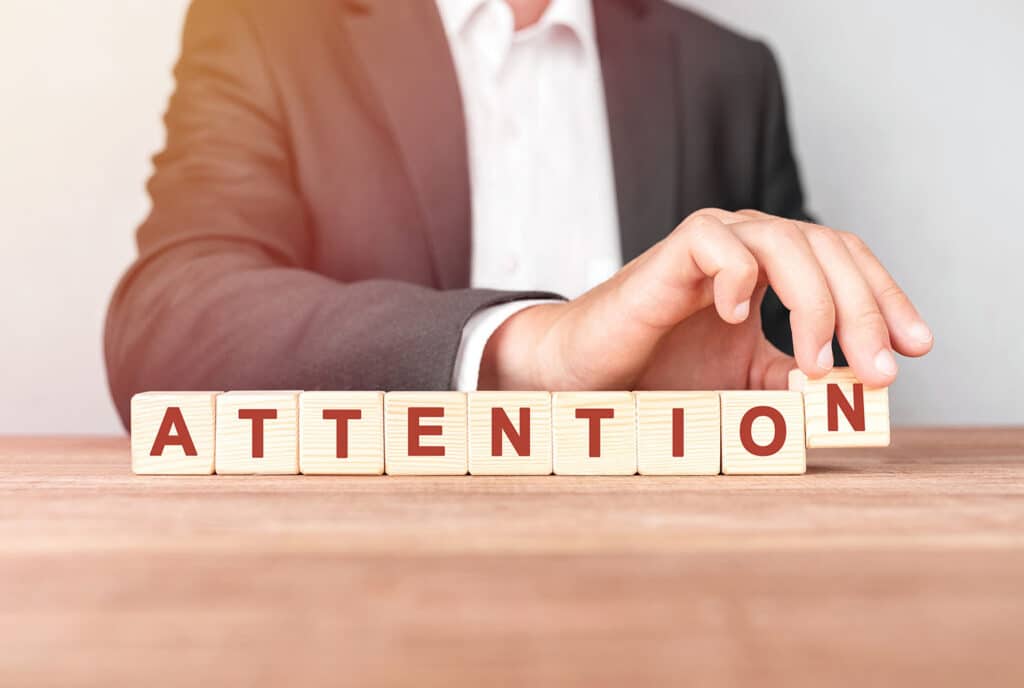
How to Improve Attention Span
Having a strong attention span can be beneficial for productivity, collaboration, and relationships. The good news is that we can improve our attention span with some simple at-home activities. [9]
Licensed medical and mental health professionals offer tremendous support as ADHD, depression, and anxiety coupled with the impact of screen time all challenge our ability to stay focused.
To receive the latest information on how you can empower and protect your family, visit the Gabb blog.

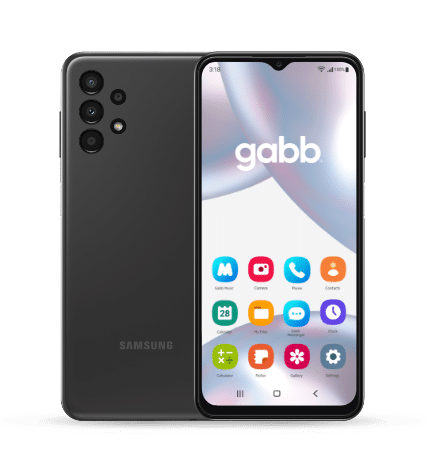
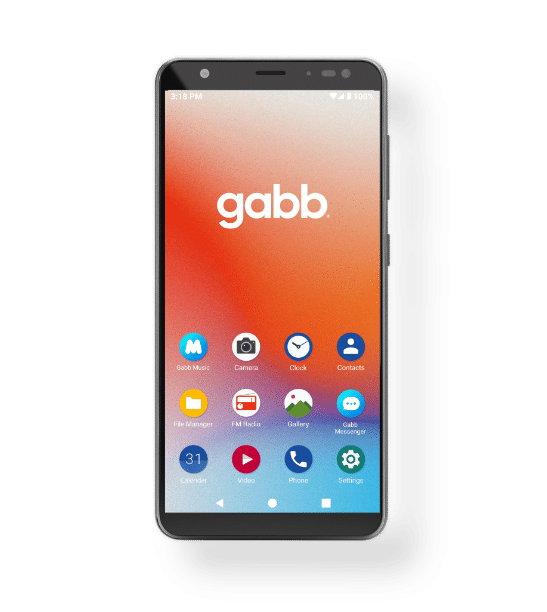








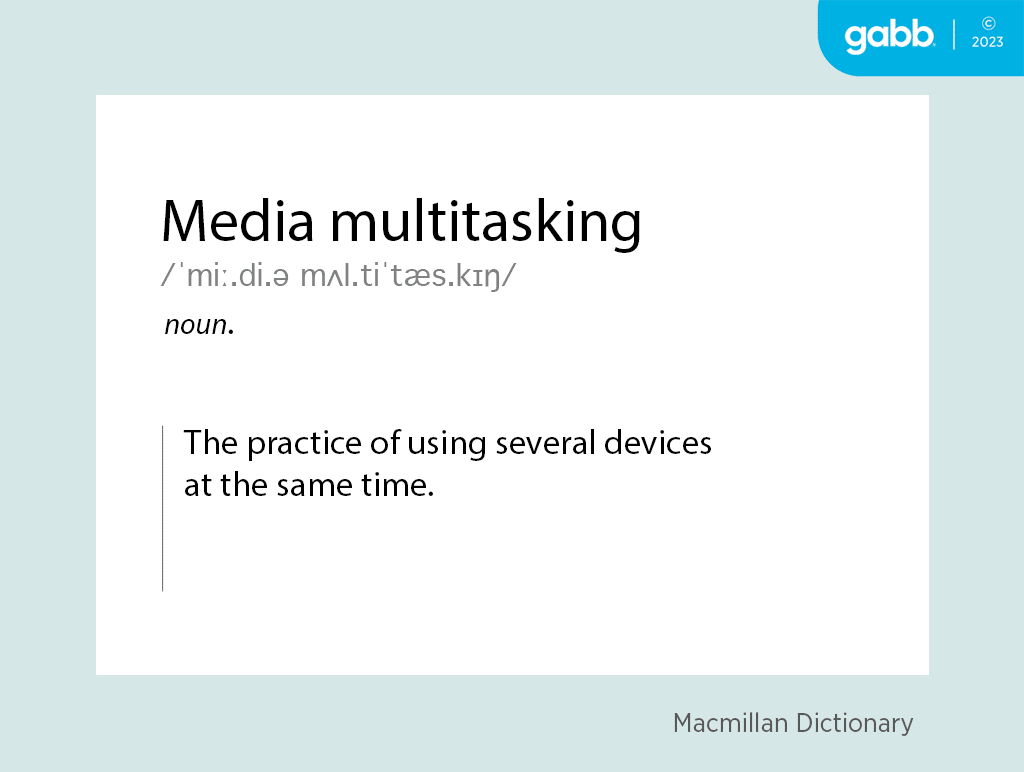
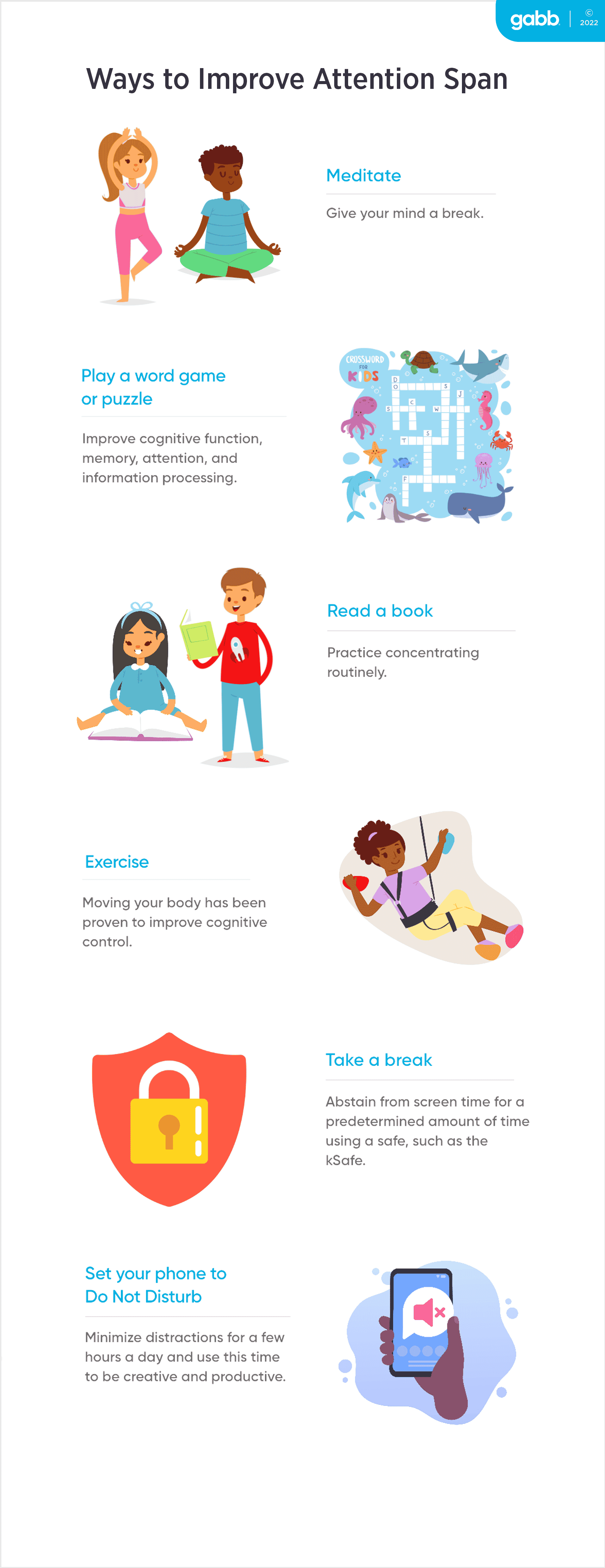

Success!
Your comment has been submitted for review! We will notify you when it has been approved and posted!
Thank you!